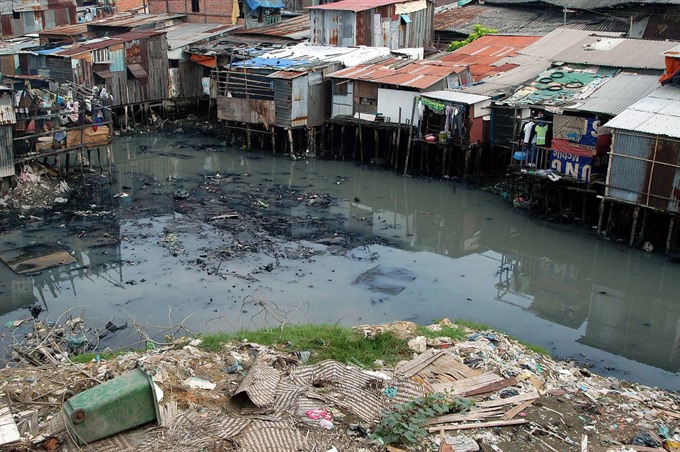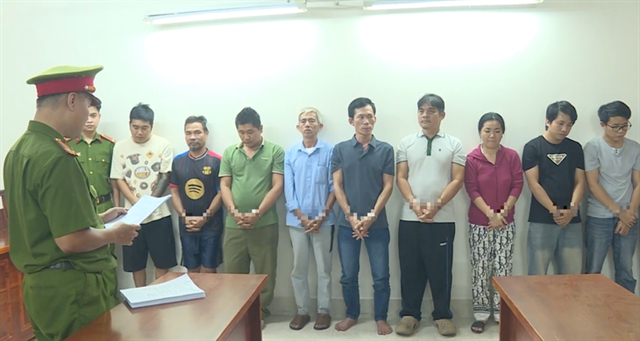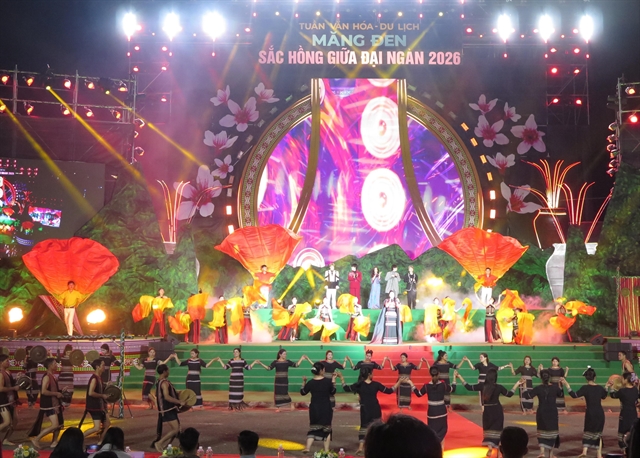 Society
Society

More than 2,000 canals around HCM CIty have been seriously polluted threatening people’s health, reported the Nông Thôn Ngày Nay (Countryside Today) newspaper.
 |
| A polluted section of Đôi Canal in HCM City. There are more than 2,000 polluted canals city-wide. — VNA/VNS Photo Thanh Phàn |
HCM CITY — More than 2,000 canals around HCM CIty have been seriously polluted threatening people’s health, reported the Nông Thôn Ngày Nay (Countryside Today) newspaper.
The pollution of canals in the city has been worsening as large quantities of household and industrial wastewater, as well as rubbish, are being discharged or dumped into canals, according to the city’s Department of Natural Resources and Environment.
For years, residents in Hiệp Phú Ward of District 9 have suffered the foul smell from Bình Thọ Canal.
“Like all people in the area, I have to close my doors and windows day and night to avoid the smell from the canal”, Nguyễn Thị Tiêm told the newspaper.
The canal is about 2km long running through the district and discharging wastewater to the Sài Gòn River.
According to the municipal Department of Natural Resources and Environment (DoNRE), there are nine industrial zones and five garment, cloth dyeing, footwear and fertiliser businesses in the district. The wastewater discharged by the businesses was one of the reasons for the pollution.
Canals running through the districts 7 and 8 have been severely polluted for years.
The smell from the black water has been poisoning local people’s health.
“In the past, the canal water was so clear that children could fish, swim and play in the canal”, said Nguyễn Văn Dũng, a resident.
“But now the canal is full of rubbish making the water dark black and terrible smelling”, he said.
A rapid increase in population, a lack of public awareness about environmental protection, and drainage of rainwater and wastewater into the same systems has contributed to the pollution.
Wastewater from households and industrial production is not being treated or is being treated improperly, according to the department.
The department said the canals were also being polluted by large amounts of waste from neighbouring provinces.
The Nhum – Xuân Trường and Cái springs and Ba Bò Canal, for example, receive a large quantity of waste from households and industries in Bình Dương Province.
Similarly, Thầy Cai – An Hạ canals receive waste from households and industries in Long An Province.
DoNRE deputy director Nguyễn Thị Thanh Mỹ said the department would inspect production establishments that release wastewater into canals, especially in pollution hot spots.
The production workshops would be required to build a wastewater treatment facility and operate according to regulations, she said.
Enterprises with wastewater treatment facilities that release more than 1,000cu.m of wastewater a day must use an automatic wastewater monitoring system. Data from the system will be sent to the department.
Enterprises that continue to pollute will have to relocate or cease operations.
The department has also worked with neighbouring provinces to draw up regulations to control wastewater discharge from enterprises near the city’s borders.
Nguyễn Ngọc Công, director of the city’s Steering Centre of Urban Flood Control Programme, said the flooding at Kinh Dương Vương Street would continue as water drainage systems along the street were being affected by housing encroaching on the land.
The drains that carry water to Lê Công Phép, Bà Tiếng and Nhảy canals are blocked.
Bà Tiếng Canal, for example, is blocked by rubbish, even though the steering centre dredged the canal.
In Bình Tân District, three canals, a water drainage gate, a water drainage sewer and six manholes have all been affected by illegally built housing, the centre reported.
In Tân Phú District, two water drains and six manholes were affected as well.
Công told agencies to dredge blocked canals and relocate households that are illegally built near canals in Bình Tân and Tân Phú.
He also told districts to launch a campaign to educate local residents about the environmental damage caused by throwing rubbish into canals.
City’s projects
In Bình Tân, a project worth VNĐ800 billion (US$36 million) to upgrade more than 3.5km of Kinh Dương Vương Street to prevent flooding was completed last year, according to the Steering Centre of Urban Flood Control Programme.
This year, the municipal authority has continued to carry our several projects on canal pollution, Mỹ said.
The projects include building wastewater treatment factories such as Tham Lương-Bến Cát Factory with capacity of 131,000cu.m per day; Nhiêu Lộc-Thị Nghè Factory with capacity of 480,000cu.m per day; and upgrading treatment capacity of Bình Hưng Factory to 141,000cu.m to 469,000cu.m per day.
Dredging canals and collecting rubbish will also be implemented during the year, she said. — VNS




